Seeing this gorgeous Lian at least once in his life, you will never refuse to grow it in your dacha. This bright plant will become a real decoration of your cottage or country house.
Description of culture
Beauty of glycine is a leaf falling curved Lian from the family of legumes. The culture is decorated with fragrant flowers in the form of brushes of all shades of purple and purple, sometimes white. The altitude of Liana reaches 10 m or more, so it is planted near reliable supports. Flowering wisteria begins in April and often continues to delight gardeners with his lush flowering until the end of summer. Holy culture is customary to consider Asian countries - China and Japan. It is in these regions that wisteria can be found everywhere - at the entrance to the house, near the arbors, in the parks and on the alleys. Glicinia has another Latin name "Visteria", which she got from Professor Kaspar Vistor. This is one of the cultures that landscape designers love. And this is not surprising, after all, Visteria can even put the most boring and uninteresting plot. Glycine is deservedly called a highly elective plant.
What beautiful wisteria happens, you can see in the photo:
Views of Glicia
In nature, you can meet many varieties of wisteria, and the most popular among lovers of Lian are called the following types:
- chinese wicinium - differs high up to 15-20 m. The plant has a thick foliage with inflorescences in the form of brushed brushes, light-purple and sometimes white, which are capable of growing up to 30 cm long. Fruits-beans growing up to 15 cm long ripen in July. Under favorable conditions pleases with its bloom all season. This is a thermal-loving liana grows most often in the southern regions. For growing in the strambo form, regular trimming of shoots is recommended;
- multi-detective wisteria - grows not more than 8-10 m in height. Flowers bluish-purple flowers, which, despite the low growth of the liana itself, reach 50 cm. This wisterium frost-resistant, easily transfers temperatures to - 22 ° C. Begins to bloom almost a month later Chinese wisteria;
- glicinia is beautiful - the appearance matches its name. The plant blooms from early May to the end of June with white-purple flowers that look like terry lanterns. Grow up to 10 m in height. Brushes reach a length of 20-25 cm and bring the benefits of the same length;
- shrub wisterial - height reaches 10-12 m, blooms in small purple-blue inflorescences. Prefers warm regions, grows well in the Crimea;
- japanese wisteria - externally not so gorgeous as other grades of wisteria, but also beautiful, with white and lilac flowers. Refers to thermo-loving plants, often found on the Black Sea coast of the Caucasus, suitable for growing in the Crimea.
Growing Glicia
Those who decided to grow by Glicinia in their plot, it is necessary to familiarize themselves with some nuances of this simple, but responsible business, then success will be guaranteed.
Glicia reproduction
You can purchase ready-made seedlings in special nurseries from specialists. They will select you the best varieties for your area. But if there is a desire to reproduce independently, then you need to know that Liano curls can be multiplied by several ways, which differ in the likelihood of rooting and complexity of the process:
- horizontal harp;
- roast vaccination;
- stalling;
- seeds.
Reproduction with tanks and cuttings
These methods are multiplied by these methods as follows:
- To make the glasses are well rooted, early spring take an annual strong escape and cut it into a place closer to the root. Then this incision is placed in the container (pot, box) with a fertilized soil, and the tip of escape is tied to some kind of support. In the last days of August, the rooted glasses can be planted at a permanent place in open ground.
- You need to select cuttings for breeding at the end of March or in early April. For this annual shoots cut into a cutlets with a length of 20-25 cm and lowered into the substrate (soil, sand, peat and humus in a 3: 1: 1: 1 ratio). The rooted seedlings of wisteria are planted into the open ground.
Reproduction of seeds
The reproduction of wisteria seeds is simple, but rarely ends with success. Wisteria grown from seeds rarely when he carries out, and even even coming around, it is not worth waiting for her lush flowering and active growth.
If you still decided to experiment, you should know how to grow wisteria from seeds:
- You can buy seeds in the store, but you can collect yourself. Do this at the end of summer, when culture flows away, and fruits are formed on it. These are the most fruit in pods, similar to beans, and there are seeds of Wisteria. Consider them from the pods, dry outdoors and store in a dry dark place.
- Seed seeds can be dried in a warm soil in a warm primer, but it is better to stretch them in domestic or greenhouse conditions. To do this, in the period from November to December, the seeds are sulking in the drawers with a soil, which consists of a delicate earth, sand and humus. Do not forget to pour drainage to the bottom of the box.
- Before sowing in autumn or winter, wisteria seeds need stratification. For spring landing immediately in open ground in stratification there is no need. Seeds are placed in a wet environment and keep there a few days. Such a medium can be dishentable sand, which is regularly wetted with water. Stratification time depends on the type and variety of the plant. Seeds of wisteria are stratified 4-5 months.
- Put boxes into a dark room where the air temperature will be maintained at 25 ° C and cover them with film or plastic. Glass is also suitable for these purposes.
- Do not allow the soil to dispel, regularly moisturize it.
- Under favorable conditions, the first sprouts should take after 3-4 weeks. 2 weeks after their appearance, transfer the tails under the sun, so that the seedlings warmer and start actively growing.
- When there will be 3 leaves on each sprouture, you can dive young. Replanted young seedlings carefully, removing them from the pot so that the portion of the soil remains on the roots. In this case, the seedlings will come better.
- You should know that wisteria grown from seeds first blooms only in 5-7 years after planning it at a permanent place and then only in the case of the maintenance of it.
Choosing a place and soil preparation
In order for wisteria to actively grow and magnificently bloom, it needs to ensure the right cultivation conditions - to choose a place and prepare the soil:
- Liana loves a bright sun and a lot of light, but at the same time it is afraid of drafts and gusty winds, it must be considered when choosing a landing room. It is desirable that half of the day of Wisteria receives sunlight, otherwise it will fall behind in the growth and its flowering will not be lush and bright.
- The plant comes around well and is actively growing on nutritional soils with good drainage. No acidic and heavy soils are not suitable for lianas, it is also contraindicated to plant wisterium into too wet soil with increased lime content. If the soil on your site does not comply with the requirements, you can refuel each pit with a mixture of clay turf (3 parts), soil (1 part), which rejected the manure (1 part) and sand (1 part).
- The site that you give under the cultivation of wisteria must be switched and focus 2-3 days before planting seedlings. This use mineral fertilizers in the amount of 30 g per 1 sq. M. m or humus in the amount of 1 kg on the same area.
Planting Sazentez
Planting wisteria to open ground is carried out early in spring when the danger of frosts. The process consists of the following steps:
- Requirements for planting seedlings, regardless of their reproduction, are absolutely the same.
- Deciding with the place of cultivation and after the preparation of the soil, it is necessary to dig up the pits with a size of 70 cm for 70 cm in a depth of at least 50 cm.
- Remove seedlings from the boxes in which they germinated from seeds or rooted from cuttings and chains. Do it so that the roots remain a little soil.
- Lower the seedling into the prepared hole and cheer the root so that the root neck remains on the surface.
- Failure to land around a seedling and paint it with water.
- Do not forget that with the growth of Liane will need a support. You can even immediately raise the plant, it will be more reliable.
- Glicinia grows well at home. In this case, it does not reach big sizes, but it does not interfere with it beautifully and fluffy blossom. You can land seedlings in beautiful pots and put them in a well-lit place.
Care for seedlings and adult glycinium
Wisteria will grow well if you provide it with the right departure, which is as follows:
- The plant must be watered as the soil drying. But just do not pour Lianin with plenty of water, it can lead to rotting and death of the root system. With a very dry weather, you can moisten the plant by spraying foliage.
- So that the water is not stored near the roots, periodically loose the land around the culture.
- Feed the wisterium 2-3 times a month minerals and organic. You can alternate fertilizer types, in this case the plant will receive everything you need for better growth. Home wardery is fed by a special fertilizer, which is suitable for indoor flowering plants.
- If the region in which you live is famous for frosty winters, wisteria needs to be stolen. The foliage is wrapped in a film, and the ground near the roots falls asleep with sand or rubble, and the pine branches are stacked on top.
- Crimping of wisteria is needed in order to rejuvenate the culture and for the formation of the crown. The procedure is carried out twice a year. After the wisteria is wondering, it is recommended to shorten most of the side shoots. After the plant spreads with foliage, you need to cut the shortened side shoots again and cut a little with new young branches. But to maintain the crown you can periodically trim the young shoots drop away from the form. If you want to raise a strabr, then pruning should be carried out otherwise. In this case, the side shoots are not shortened, but the top of the main escape is cut to the first strong kidney. The first time it is done after landing into open ground, and the next time already in the summer, when the side shoots will grow up. The third time the procedure is repeated in winter. For 3, the stramb trim is carried out once in the summer and in winter.
Pests and diseases threatening wisteria
It cannot be said that wisteria suffers greatly from the attack of pests and is infected, but, nevertheless, sometimes it happens:
- The main enemies of the plant are the wave and clover tick. Most often they are activated in dry weather. Insecticides and acaricides are used to destroy these insects. They need to make a foliage on which pests appeared. Works are recommended in protective clothing, eyes protect the glasses, mouth and nose to close the mask. Time for spraying Choose evening or morning. If rain passes after work, the procedure must be repeated after 1-2 days.
- If you notice that the foliage of wisteria is yellowed and began to curl into the tube, then know that the plant struck chlorosis. This happens if you planted Lian on alkaline soils. For treatment, iron salts are used, which feed the roots of glinate.
Now that you know everything about wisteria, you can safely take for the growing of this wonderful plant. Believe me, you will not regret the time spent. Liana, grown with love, be sure to thank you with all its beauty and fragrance.

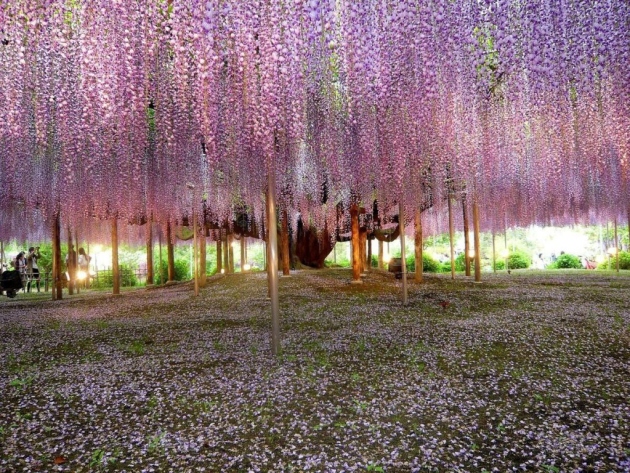
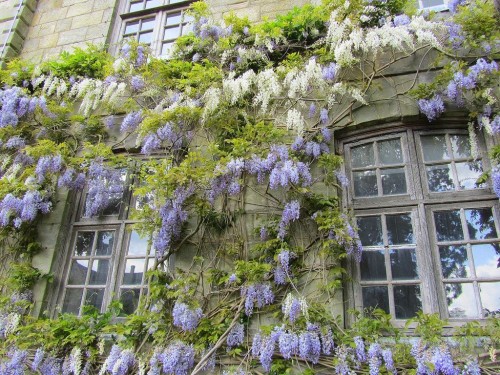

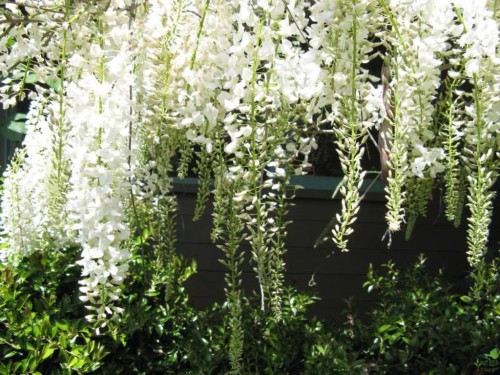
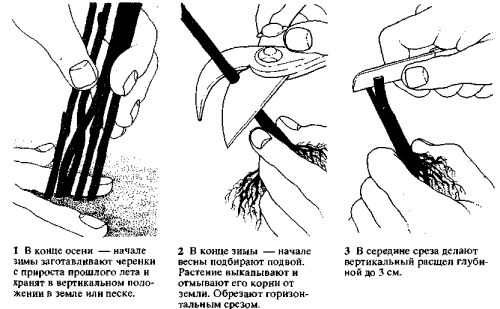
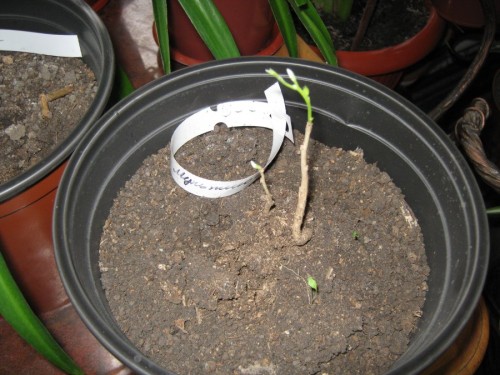
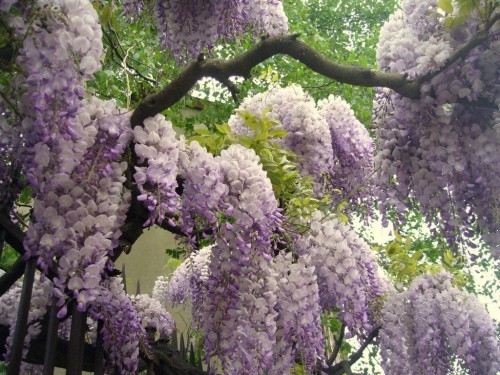
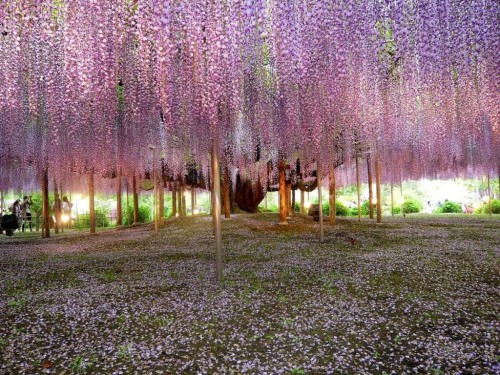












 Start a discussion ...
Start a discussion ...